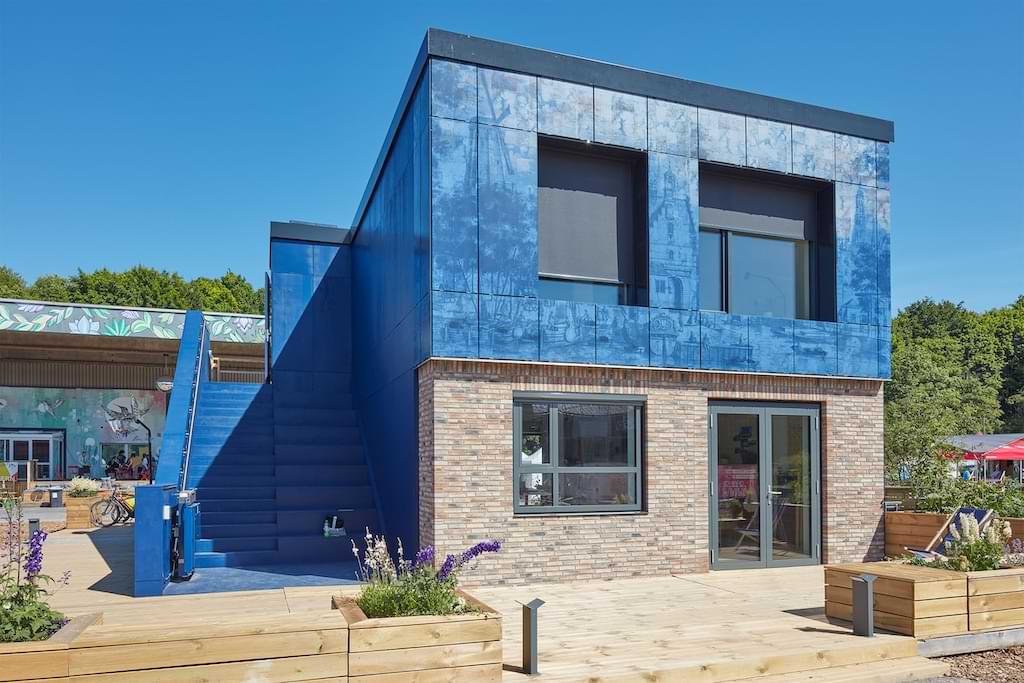As the global construction industry pivots toward sustainable solutions, Building-Integrated
Photovoltaics (BIPV) are gaining rapid traction among architects, developers, and green
building advocates. These innovative systems blur the line between renewable energy
technology and modern design, offering an elegant, efficient way to transform buildings into
power-generating assets.
So what makes BIPV the future of sustainable architecture? Let’s explore.
What Is BIPV?
Building-Integrated Photovoltaics are solar power-generating elements integrated directly
into the fabric of a building—such as façades, rooftops, skylights, canopies, or windows.
Unlike traditional solar panels, which are bolted onto surfaces, BIPV modules are embedded
into the structure itself, serving both as a building material and an energy system.
How BIPV is Powering Sustainable Design
Dual Functionality
BIPV systems eliminate the need for separate energy infrastructure by merging architectural
function and solar performance. Whether acting as cladding, glazing, or roofing, these
panels contribute structurally while reducing energy consumption.
Architectural Integration
With advances in solar technology and materials science, BIPV solutions now offer a wide
array of colors, finishes, and levels of transparency. This enables designers to create
energy-efficient buildings without compromising aesthetics. From sleek monochrome glass
to vibrant multi-color panels, modern BIPV supports both bold and minimalist visions.
Energy Efficiency and Cost Savings
BIPV systems contribute to a building’s energy demands by generating electricity on-site,
reducing reliance on the grid. Over time, this translates into reduced utility costs and better
energy security. In some regions, BIPV installations also qualify for tax incentives or green
building certifications.
Urban Sustainability and Net-Zero Goals
Cities are under pressure to meet climate targets. BIPV offers an efficient solution to urban
decarbonization by converting unused building surfaces into renewable energy
generators—especially valuable in space-constrained areas. It aligns perfectly with net-zero
energy building strategies.
Long-Term Value
Beyond immediate energy savings, BIPV systems often come with extended warranties and
lifespans exceeding traditional solar modules. High-quality glass-glass configurations, for
instance, can last upwards of 30–50 years, offering exceptional long-term return on
investment.
The Role of Architects and Designers
BIPV is more than just an engineering solution—it’s an architectural opportunity. It empowers
designers to rethink energy as an aesthetic element, weaving sustainability into the very skin
of the building. And with digital design tools and material customization becoming more
accessible, it’s never been easier to integrate solar technology at the earliest design stage.
Challenges and the Path Forward
While BIPV adoption is growing, challenges remain—such as higher initial costs, certification
complexity, and integration with existing building codes. However, as demand increases and
innovation continues, these barriers are rapidly being addressed through modular systems,
streamlined design platforms, and supportive regulatory frameworks.
Building-Integrated Photovoltaics are not just a trend—they are redefining how we think
about buildings, energy, and the environment. As cities rise and sustainability becomes
non-negotiable, BIPV represents a beautiful, functional, and forward-thinking solution for a
world in transition.
Energy Efficiency Meets Art
ColorBlast® is engineered to transform any building into a solar powerhouse—in any shade
you want. Using a precision-printed dot pattern and matte finish, these panels offer:
- Over 1000 standard color options
- Custom color-matching
- Intricate multi-colored designs without impacting performance
- Seamless integration into walls, canopies, façades, and more
ColorBlast® doesn’t just complement architecture—it becomes part of the architectural
identity.
Customization Like Never Before
Navgrun’s BIPV modules are highly customizable in size and finish, and can be tailored for
semi-transparency, rear-side color, and more. This means you can now match sustainability
goals with exact design specifications.
Built for Performance, Designed for the Future
With Navgrun’s ColorBlast®, you’re not just installing solar—you’re investing in:
- Durability: Glass-glass panels with a lifespan of up to 50 years
- Safety & Standards Compliance: Certified to IEC, UL, BIS, and compliant with NBC
- and EU building codes
- Energy Output: Powered by advanced TOPCON 16BB N-Type cells, delivering high
- efficiency and low degradation over time
- Smart Quality Control: Software-verified color consistency, mismatch prevention, and
- rigorous EL testing
From Concept to Reality: A Seamless Process
Navgrun’s proprietary Solar SuiteTM makes the BIPV journey frictionless—from visual
mockups to technical documentation, sample prototyping to final installation. It’s a fully
supported process ensuring architectural intent is preserved while maximizing energy output.
Who Is It For?
Whether you’re a developer building India’s next LEED-certified tower, an architect designing
a bold civic landmark, or a homeowner craving aesthetic solar facades—Navgrun’s
ColorBlast® BIPV is the ideal blend of sustainability and design sophistication.
Sustainability at Every Step
ColorBlast® isn’t just beautiful—it’s clean at its core:
- Manufactured in 100% renewable-powered facilities
- Over 90% recyclable materials and packaging
- Part of a circular economy-focused supply chain
- Backed by Life Cycle Assessment (LCA) documentation
Navgrun is committed to India’s clean energy future—not just in product design, but across
the entire value chain.

